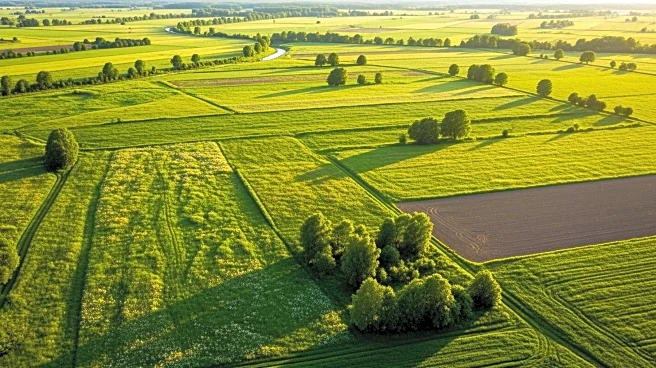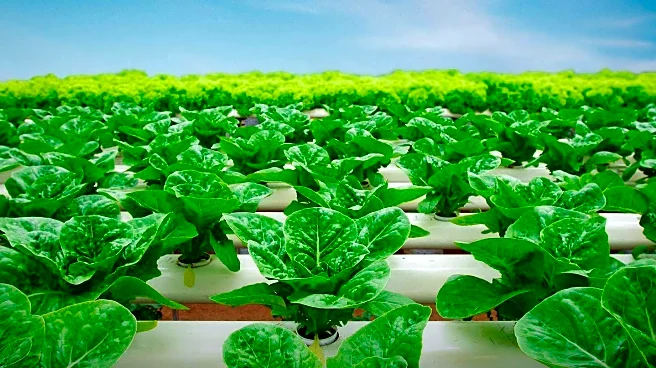What's Happening?
The U.S. regenerative agriculture market is experiencing significant growth, projected to reach $6,319.8 million by 2030, with a compound annual growth rate (CAGR) of 16% from 2025 to 2030. This expansion is driven by a shift towards sustainable farming
practices, including cover cropping, rotational grazing, and corporate commitments to climate-positive supply chains. The market is becoming a strategic priority across various sectors such as food, beverage, retail, and agri-inputs. Federal initiatives, consumer demand for climate-friendly produce, and carbon-credit monetization are accelerating adoption. Key developments include investments by fast-food chains in regenerative grazing programs and ag-tech companies deploying AI-enabled soil monitoring systems.
Why It's Important?
The growth of regenerative agriculture in the U.S. is crucial for enhancing soil health, biodiversity, and ecosystem resilience. It supports climate mitigation efforts through carbon sequestration and water conservation, addressing environmental challenges. The market's expansion reflects a broader shift towards sustainable practices, influencing food production, supply chains, and consumer preferences. Companies like General Mills and Cargill are integrating regenerative practices to meet sustainability goals, impacting the agricultural sector and related industries. This transition is vital for achieving long-term environmental and economic benefits, positioning the U.S. as a leader in sustainable farming.
What's Next?
The continued adoption of regenerative agriculture practices is expected to drive further innovation and collaboration among farmers, agritech companies, and global brands. The development of carbon credit programs linked to regenerative outcomes will enable farmers to monetize soil improvements. As corporate sustainability commitments grow, demand for regenerative raw materials will increase across food, textile, and agri-based industries. Supportive government policies and incentive programs will further promote sustainable land management, encouraging widespread adoption. The market's evolution will likely set benchmarks for global sustainability-driven farming practices.
Beyond the Headlines
Regenerative agriculture's emphasis on soil restoration and biodiversity enhancement has ethical and cultural implications, promoting a holistic approach to farming that respects natural ecosystems. This shift may lead to long-term changes in agricultural policies and practices, fostering a more sustainable and resilient food system. The integration of advanced technologies, such as AI and remote sensing, will enhance the ability to measure and improve regenerative performance, driving further advancements in the field.













